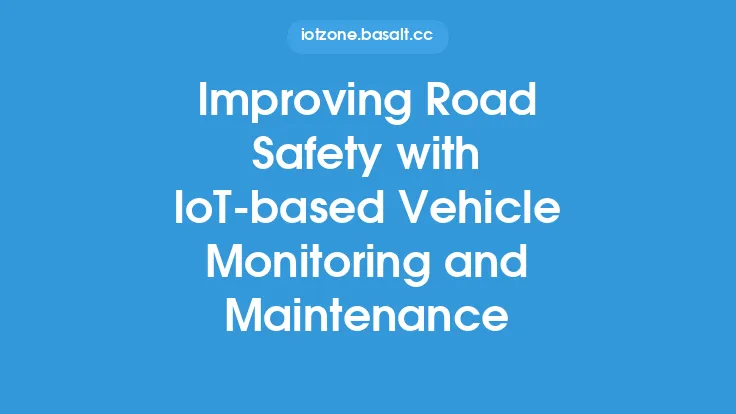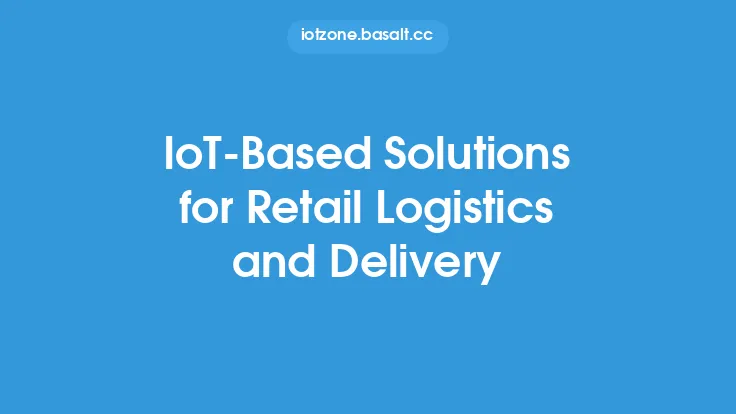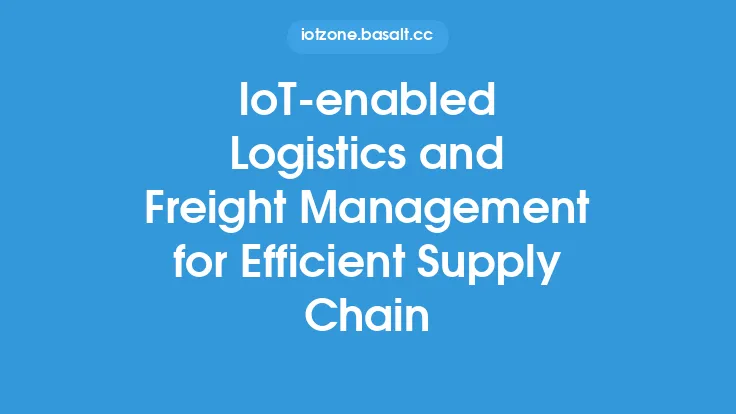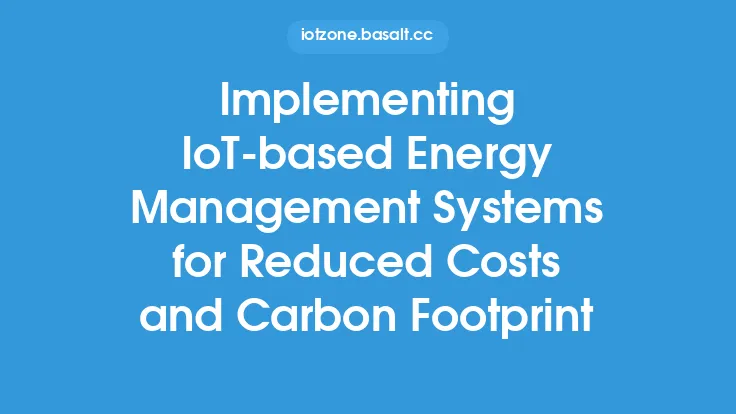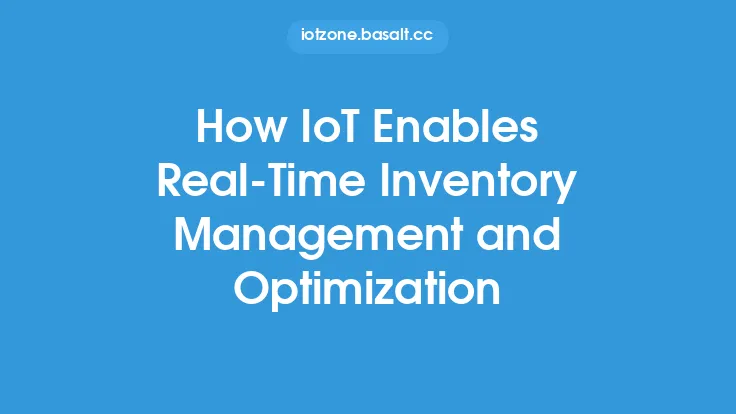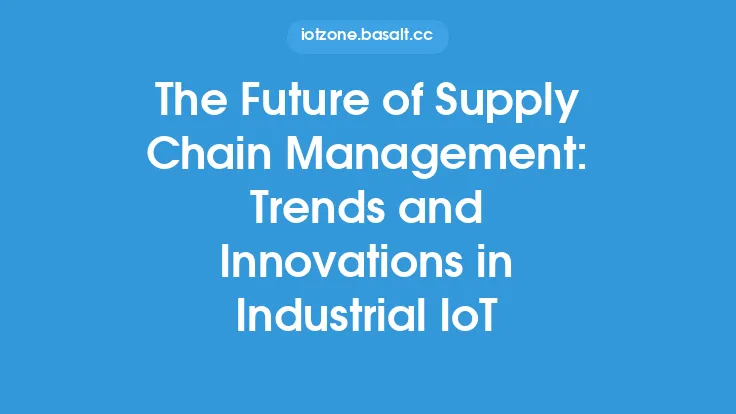The increasing demand for efficient and reliable transportation has led to the development of innovative solutions that leverage the power of the Internet of Things (IoT). One such solution is IoT-based vehicle tracking and fleet management, which has revolutionized the way companies manage their vehicles and fleets. This technology has become an essential tool for businesses that rely on transportation, enabling them to optimize their operations, reduce costs, and improve customer satisfaction.
Introduction to IoT-based Vehicle Tracking
IoT-based vehicle tracking involves the use of GPS, cellular networks, and other sensors to track the location, speed, and other parameters of vehicles in real-time. This information is then transmitted to a central server or cloud-based platform, where it can be analyzed and used to make informed decisions. The technology uses a combination of hardware and software components, including GPS trackers, cellular modems, and sensors, to collect and transmit data. The data is then processed and analyzed using advanced algorithms and machine learning techniques to provide insights into vehicle performance, driver behavior, and other key metrics.
Key Components of IoT-based Fleet Management
IoT-based fleet management involves the use of a range of technologies and components, including:
- GPS tracking devices: These devices use satellite signals to determine the location of vehicles and transmit this information to a central server or cloud-based platform.
- Cellular networks: Cellular networks, such as 2G, 3G, and 4G, are used to transmit data from vehicles to the central server or cloud-based platform.
- Sensors: Sensors, such as accelerometers and gyroscopes, are used to collect data on vehicle performance, driver behavior, and other parameters.
- Software platforms: Software platforms, such as fleet management software, are used to analyze and process data, provide insights and reports, and enable real-time monitoring and control.
- Data analytics: Data analytics tools, such as machine learning and predictive analytics, are used to analyze data and provide insights into vehicle performance, driver behavior, and other key metrics.
Benefits of IoT-based Vehicle Tracking and Fleet Management
The benefits of IoT-based vehicle tracking and fleet management are numerous and well-documented. Some of the key benefits include:
- Improved vehicle utilization: IoT-based vehicle tracking and fleet management enable companies to optimize vehicle utilization, reducing idle time and improving productivity.
- Reduced fuel consumption: By optimizing routes and reducing idle time, companies can reduce fuel consumption and lower their carbon footprint.
- Improved driver behavior: IoT-based vehicle tracking and fleet management enable companies to monitor driver behavior, providing insights into areas such as speeding, harsh braking, and acceleration.
- Enhanced customer satisfaction: IoT-based vehicle tracking and fleet management enable companies to provide real-time updates and notifications, improving customer satisfaction and loyalty.
- Reduced maintenance costs: IoT-based vehicle tracking and fleet management enable companies to monitor vehicle performance and schedule maintenance, reducing maintenance costs and improving vehicle lifespan.
Technical Requirements and Considerations
The technical requirements and considerations for IoT-based vehicle tracking and fleet management are complex and multifaceted. Some of the key considerations include:
- Hardware and software compatibility: Ensuring that hardware and software components are compatible and can communicate effectively is critical to the success of IoT-based vehicle tracking and fleet management.
- Data security and privacy: Ensuring that data is secure and private is critical to the success of IoT-based vehicle tracking and fleet management.
- Scalability and flexibility: Ensuring that systems are scalable and flexible is critical to the success of IoT-based vehicle tracking and fleet management, as companies grow and evolve.
- Integration with existing systems: Ensuring that IoT-based vehicle tracking and fleet management systems can integrate with existing systems, such as enterprise resource planning (ERP) and customer relationship management (CRM) systems, is critical to the success of IoT-based vehicle tracking and fleet management.
Real-World Applications and Case Studies
IoT-based vehicle tracking and fleet management have a wide range of real-world applications and case studies. Some examples include:
- Logistics and transportation companies: Companies such as UPS and FedEx use IoT-based vehicle tracking and fleet management to optimize their operations, reduce costs, and improve customer satisfaction.
- Taxi and ride-hailing companies: Companies such as Uber and Lyft use IoT-based vehicle tracking and fleet management to optimize their operations, reduce costs, and improve customer satisfaction.
- Public transportation agencies: Public transportation agencies use IoT-based vehicle tracking and fleet management to optimize their operations, reduce costs, and improve customer satisfaction.
- Construction and mining companies: Companies in the construction and mining industries use IoT-based vehicle tracking and fleet management to optimize their operations, reduce costs, and improve safety.
Future Developments and Trends
The future of IoT-based vehicle tracking and fleet management is exciting and rapidly evolving. Some of the key trends and developments include:
- Increased use of artificial intelligence (AI) and machine learning (ML): The use of AI and ML is expected to increase in IoT-based vehicle tracking and fleet management, enabling companies to analyze data and make informed decisions.
- Increased use of cloud-based platforms: The use of cloud-based platforms is expected to increase in IoT-based vehicle tracking and fleet management, enabling companies to scale and flex their operations.
- Increased focus on cybersecurity: The focus on cybersecurity is expected to increase in IoT-based vehicle tracking and fleet management, as companies seek to protect their data and systems from cyber threats.
- Increased use of 5G networks: The use of 5G networks is expected to increase in IoT-based vehicle tracking and fleet management, enabling companies to transmit data faster and more reliably.
